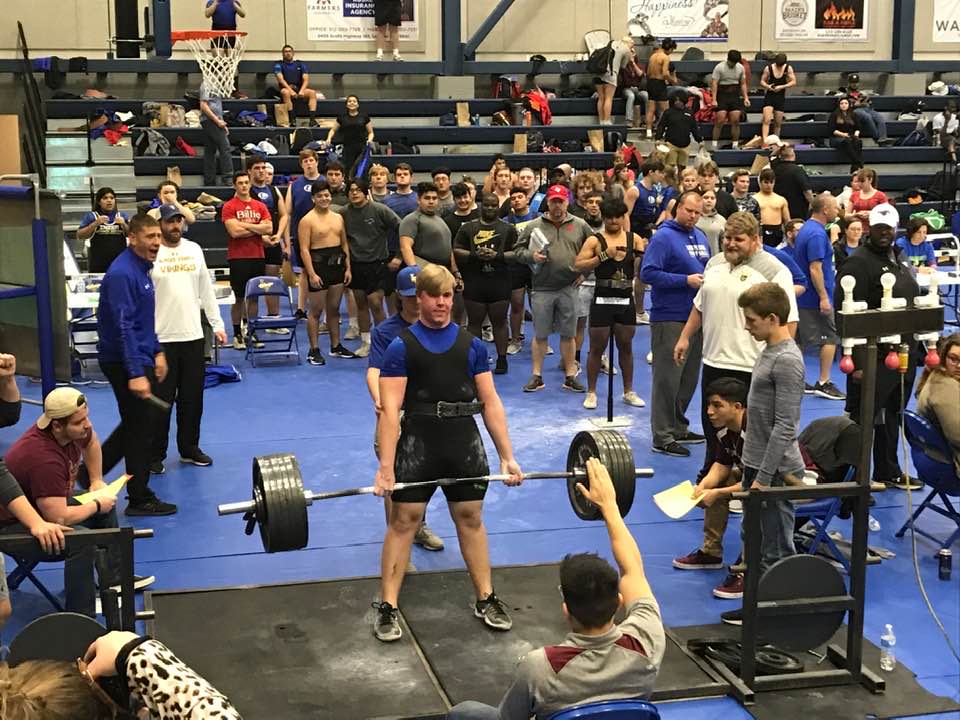How To Train Post Season High School Football Players
If your high school football player has just spent months grinding out those football practices, meetings, bus rides, football games, and sporadic workouts it’s time to rest. I suggest taking the Holidays off and then sometime around late January it’s time to get back to work.
But how?
Once the high school football player has allowed sufficient time to rest his mind and body, it’s time to come up with a plan. My plan includes bodybuilding. Bodybuilding is all about balance, using medium weights for multiple sets of 10 – 15 reps. Bodybuilding is designed to BALANCE the body and bring lagging muscle groups up to par. Every single high school football player that I have encountered is undersized and underpowered – or worse, too heavy with a lopsided muscle to fat ratio (more fat than muscle). A weak muscle is an injury waiting to happen. So the first thing we want to do is strengthen the entire body with a 2-3 time a week intelligent, efficient workout routine.
After we warm-up for 5-10 minutes, using a broomstick, a rumble roller, a power plate, performing 3-way lunges and leg swings, we begin. The warmup is imperative to “grease the groove” and to mentally lock into the workout. I typically spend 3-6 weeks in the bodybuilding phase and then move into more sport-specific exercises and workouts. For bodybuilding, we do bench press, incline bench press, dumbbell bench press, dumbbell pullovers, push-ups, dips, pullups, shrugs, upright rows, good mornings, deadlifts, shoulders, biceps, triceps, forearms, core, neck, and calves. These workouts should not cause the athlete to get overly sore although their forearms and calves may take a hit as they hardly ever train these bodyparts outside of my program.
During these workouts, we begin to talk about goals – lifting goals, performance goals, football goals, and nutrition goals. It’s essential to start the goal-setting process early and then remind the athlete of their goals down the road. My athletes always come back from football smaller and weaker than when they left. As an example, “Sam” recently lost 10lbs of bodyweight and he lost 20lbs off of his bench press during the football season. Now, our goal is to recapture that and exceed those levels. The danger, though, is that if Sam gets sick and is out for 2-3 weeks, now we’ve lost more time. Or if Sam is somehow injured, the same thing – we lose more time. The high school years are over in a flash so it’s important to light a fire to help them make up the strength loss.
NUTRITION
Nutrition is the most underutilized “weapon” in high school athletics. In most cases, too much junk food is eaten which typically includes sugary cereals, sugary cereal bars, crackers, pretzels, white bread, poor-quality meats, sugary juice, and of course junk from fast-food restaurants. I’ve currently got 34 high school athletes in my nutrition database and each one of those athletes has had their nutrition tracked every day (except Christmas or vacations). 365 days in a year x 34 = 12,410 food logs. And that’s just one year. I’ve been working with athletes nutrition since 2015.
Once the athlete’s nutrition is tweaked and their daily calories are monitored the magic begins to take place. They get stronger, they gain good weight, they become bigger and faster. Their confidence improves and they get a lifelong education in nutrition. How much sugar is too much? How much sodium a day is realistic? Is fat good or bad? How many calories a day should they eat? When should we raise their calories? And on and on. I’ve been logging my own food since January 14, 2010. If you measure it, you can manage it as the saying goes.
HOW TO START
- Encourage your athlete to rest until late January. If they are playing another sport, that’s fine, just make sure to get enough good quality sleep. Take a break from the weights if possible.
- Have a plan. Start an intelligent resistance training program using basic bodybuilding movements. Do bodyweight exercises if need be although, over time, heavier resistance will be needed to get bigger, faster, and stronger…unless you’re Herschel Walker.
- Eat correctly. Aim for 4-6 meals a day. A protein drink is a meal. An apple and a handful of roasted almonds is a meal. Meals don’t have to be gigantic. 300-500 calories per meal works although 2-3 meals of those 4-6 should be more caloric – 700 to 1000 calories.
- Watch the scale and strength levels. Weigh at the same time of day 1-2 days a week. If the scale tells you that bodyweight is going up and strength levels on lifts are going up, you’re on the right track. Keep going!
IN CONCLUSION
The high school years go fast. Some of my athletes who started in 9th grade with my program are now juniors in College as of 2021! It’s important to set a good foundation as soon as possible by following the “How To Start” steps above.
Good luck!
-Scott
P.S. Check out the proven strategies in my book, “Mom’s Guide To Weight Gain For High School Football Players” at https://www.amazon.com/dp/B076FDC96G
That’s one of my long time clients, Ethan Harris in the picture deadlifting 600lbs at his senior high school powerlifting contest. He won first place. He trained correctly and ate correctly. He now plays football at Austin College.

